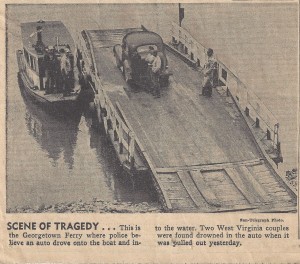Today, motorists hardly give a thought to whether the Ohio River is high or low, blue or muddy, filled with ice or thick with fog. Back in the day of ferries, those details mattered. Navigational charts now show three railroad bridges and thirteen highway bridges between mile marker zero and the Ohio state border.
During the summers of the 1800s, the Ohio River ran only about 1 foot deep between Pittsburgh and Cincinnati, according to the Army Corps of Engineers. Winter could freeze boat traffic but allowed pedestrians to cross the frozen waterway, even after the first series of dams were completed in 1929. .At that time the channel was “guaranteed” by the Army Corp of Engineers to be a depth of at least nine feet.
Before there were bridges, people were attracted to the other side of the Ohio River. So ferries systems developed up and down the Ohio River: Sewickley to Coraopolis and Moon Township, Ambridge to the South Heights, Rochester and Beaver to Monaca and Vanport Township to Bellowsville , Industry to Shippingport before the Shippingport Bridge was opened in 1964.
Georgetown had a ferry operating to Smiths Ferry opposite. The first evidence of a ferry was when troops from Burgettstown marched to Georgetown where they crossed the river to join Gen “Mad Anthony” Wayne in the Battle of Fallen Timbers in 1794. The first ferry was a large raft that could carry horses and buggies. A cable and strong arms pulled it across one way, and the current helped to pull it across the other direction. In more modern ferry days, a gas-powered “yacht” was attached to the side of the flat boat deck by a swivel so it could push the ferry in either direction. Pedestrians were welcome in the cabin of the “yacht,” but most simply stood on the deck.
When Crucible Steel ruled Midland, the ferry carried commuters from Georgetown and southside Beaver Co as far as Pittsburgh to work at the steel mill. The ferry moved up to eight cars at a time on its 10-minute crossing. Driving to the bridges, in Rochester or East Liverpool, meant at least a 45-minute drive into Midland.
The ferry, whether owned by Dawsons or Smiths, operated continuously until 1950 when a tragic accident forced it to cease operations.
The steps to the ferry at Georgetown Landing are long gone. The cobblestone end of Market St is in disrepair. Once upon a time, the Georgetown Ferry was part of daily life.
Copyright © 2020 Francis W Nash
All Rights Reserved
No part of this website may be reproduced without permission in writing from the author.
